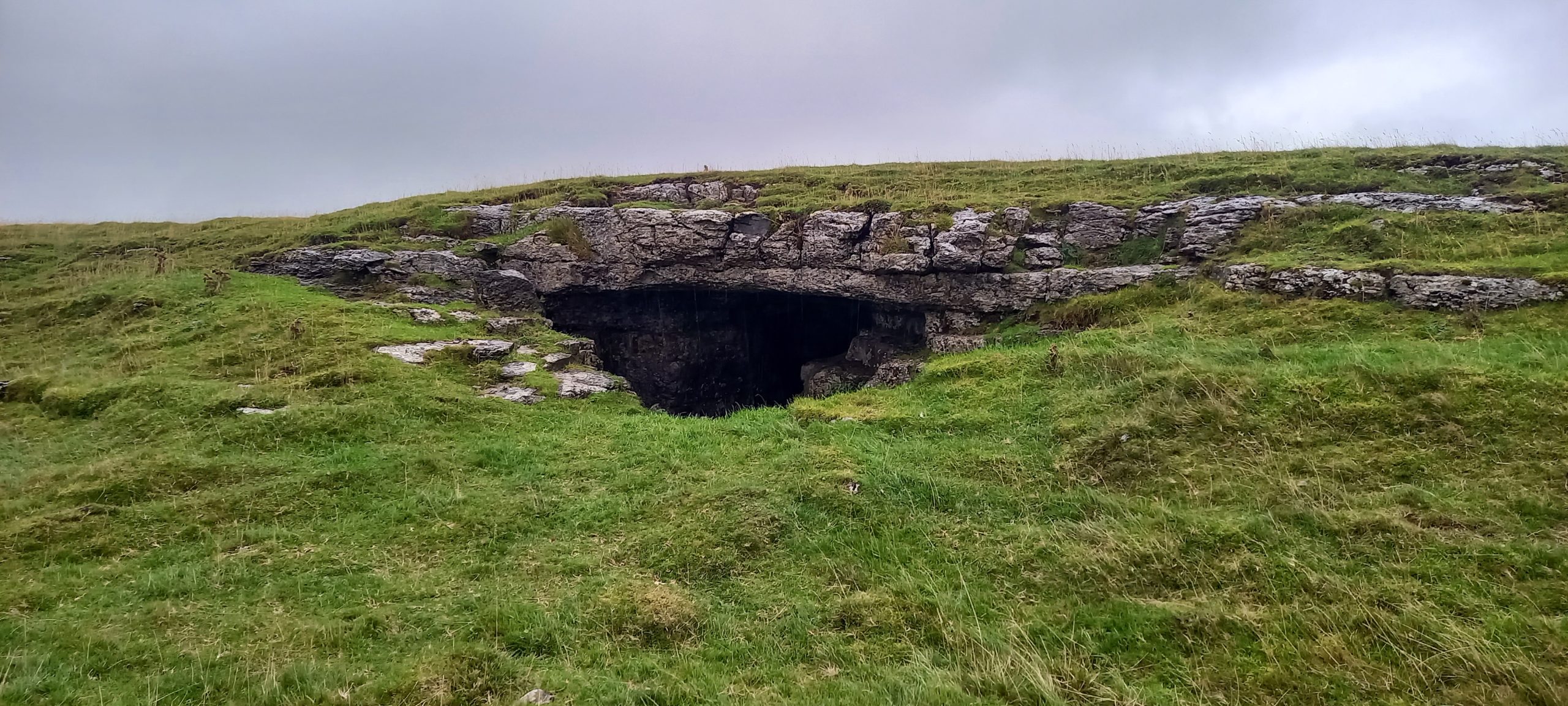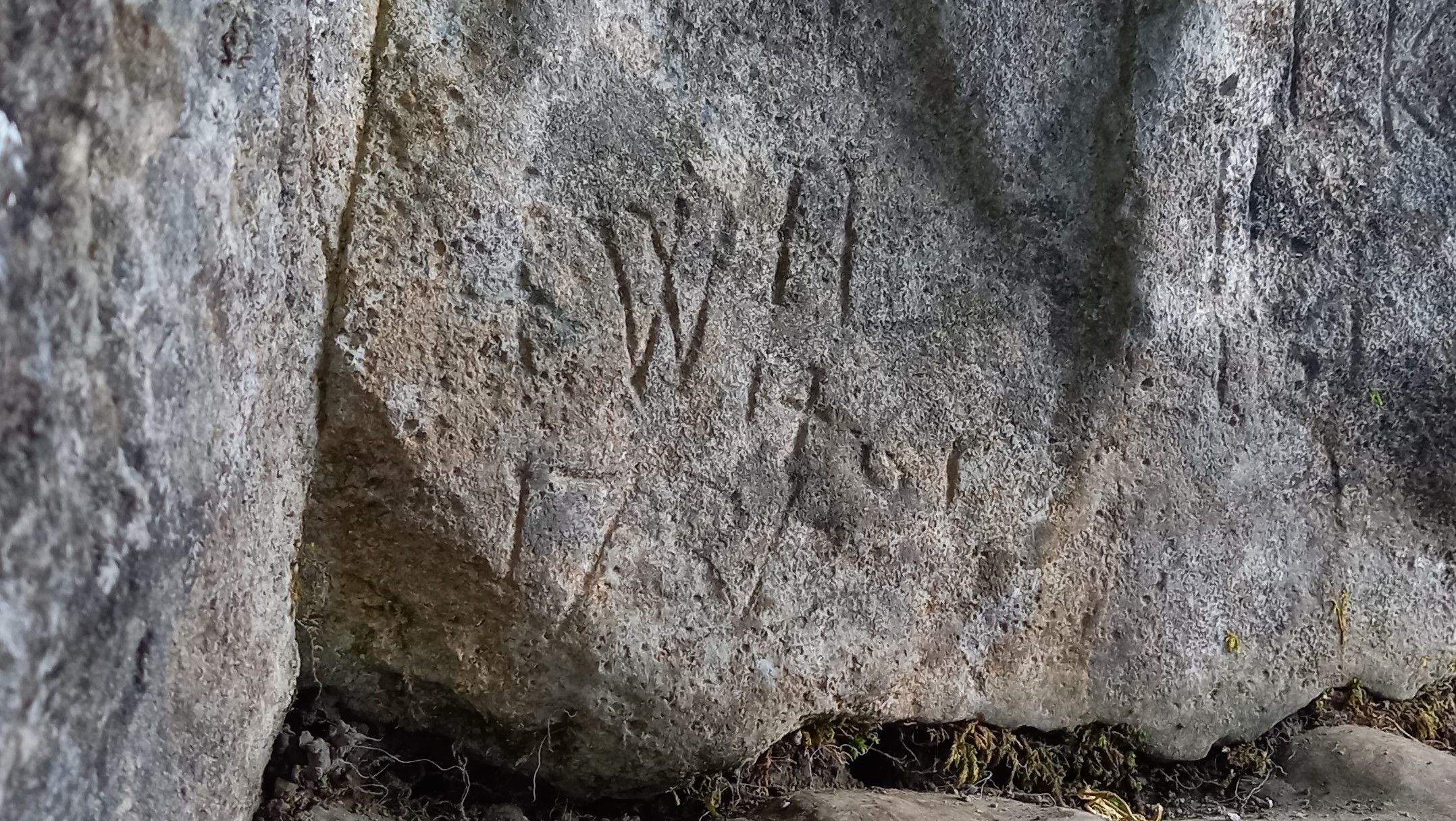Published in Cave and Karst Science, Volume 49, No.3, p136. December 2022
Dead Man’s Cave (NGR SD 800 670, Alt. 328m OD). The cave is situated within an area of ‘Access Land’ and is located above the scars to the northeast of a footpath between Feizor and Stackhouse. A wide entrance in the side of a grassy hollow leads to a roomy passage which closes down to a calcite and clay choke. The cave length is approximately 12m (Brook, et al., 1996).

A visit to the site in June 2022, as part of a weekend field meeting organized by the British Cave Research Association (BCRA) Cave Archaeology (CA) Special Interest Group (SIG) had identified a wealth of historical markings at the site (Simmonds, Wilson, and Hall, 2022).
The cave entrance contains an abundance of incised markings on both of its side walls, the earliest inscription dates back to the 15th century – 1461. During the medieval period, the upland meadows that surround Dead Man’s Cave were used for summer grazing, when the cave would have offered a suitable place for shelter and storage, also providing a possible context for the medieval date and its associated initials (Simmonds et al., 2022).

However, the date itself has enormous historical significance in that it corresponds to the year of the infamous ‘Battle of Towton’, the site of which is located some 50 miles to the southeast of Giggleswick (NGR SE 478 386). The political instability of the mid- to late-15th century led to a series of Civil Wars, now known as the Wars of the Roses (1455–1485), as rival factions of the House of Plantagenet fought for control of the English throne. The rival Kings in this period of English history were Henry VI of the House of Lancaster and Edward IV of the House of York.
According to English Heritage (1995) “…Although some historians have expressed doubt about the numbers that were eventually involved in the Battle of Towton, it is clear that the two armies were of an exceptional size for those times. There was a sharp fight at Ferrybridge on the River Aire on 28 March, which the Yorkists won, followed by the largest battle of the Wars of the Roses at Towton the next day. After ten hours of the severest fighting King Edward’s men emerged victorious. King Henry and Queen Margaret fled northwards to Newcastle and from there to Scotland, to continue the war as best they could. The presence of over 100,000 men and upwards of 28,000 deaths makes Towton the largest and bloodiest battle ever fought in England.”
References
Brook, A, Brook, D, Griffith, J and Long, M H, 1996 (Reprint: first published 1991). Northern Caves, Vol.2: The Three Peaks. [Burnley: Lords Printers.] p.42.
English Heritage, 1995. Battlefield Report: Battle of Towton 1461. Accessed 31 October 2022: https://historicengland.org.uk/content/docs/listing/battlefields/towton/
Simmonds, V, Wilson, L J and Hall, A, 2022. Meeting Report: British Cave Research Association (BCRA) Cave Archaeology (CA) Special Interest Group (SIG) Field Meeting based at Lower Winskill, near Settle, Yorkshire Dales. Cave and Karst Science, Vol.49, No.2, 80–83.

